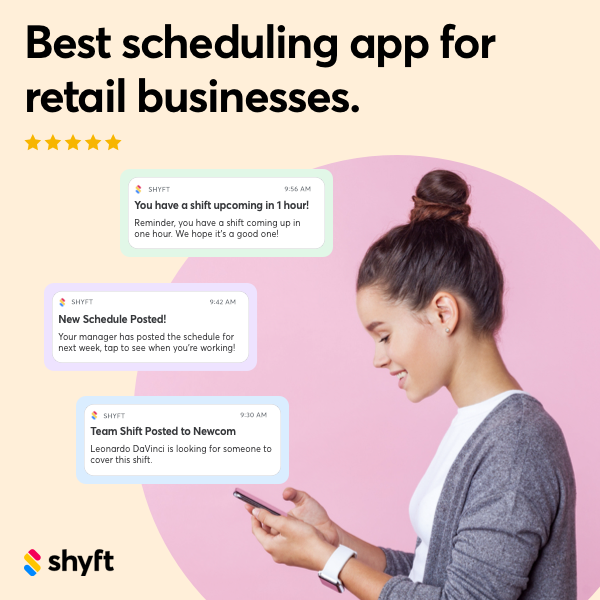Retail remains a cornerstone of the small business landscape, and opening a brick-and-mortar shop can be both exciting and challenging. Whether you’re exploring how to start a retail store business or considering an online retail clothing boutique, the process involves carefully balancing legal requirements, operational best practices, and a solid strategy for growth. From city zoning rules to employee scheduling, every step requires thoughtful planning. This guide will explore how to start a retail store, outline crucial industry regulations, and highlight opportunities that might help you reduce costs—such as local tax incentives, grants, and specialized workforce training programs.
Because retail laws can vary by location and industry, staying current on zoning laws, retail signage regulations, and labor standards is essential. For example, Seattle, San Francisco, and New York City all have specific fair workweek or secure scheduling ordinances that affect when and how you can schedule retail workers. You should always consult your city or county government for the latest requirements. Let’s walk through the 10 essential tips you need to know, including budgeting, finding the right location, marketing, licensing, and hiring the right team—plus how scheduling software like Shyft can help streamline operations once your doors open.
1. Conduct Thorough Market Research
The first step in learning how to start a retail store is to understand your potential customers and competitors. Market research sets the foundation for your product lineup, pricing, and promotional strategies. Look into local demographics, purchasing behaviors, and existing businesses in your niche. You might discover an untapped demand for certain products or realize that the market is crowded in specific areas. This research will help you refine your store concept and choose a location with enough foot traffic and demand to sustain steady growth.
- Identify Customer Segments: Know who will shop in your retail store—are they budget-conscious, trend-savvy, or value experience over cost?
- Study Competitors: Evaluate price points, store layouts, and loyalty programs to see what resonates with local shoppers.
- Evaluate Foot Traffic: Analyze pedestrian counts or car traffic in potential areas. Consider proximity to complementary businesses that can drive more customers.
- Seek Niche Opportunities: Is there a growing trend or underserved niche, such as eco-friendly clothing or plus-size fashion, in your community?
Spending extra time on thorough research can help you choose the right products and pricing strategy. With the correct market insights, you’ll have the data you need to present a compelling business plan to potential investors or lenders, which is vital if you’re exploring how to start a retail store with no money and need financial backing.
2. Develop a Solid Business Plan and Budget
A robust business plan not only helps secure financing but also guides you through the practicalities of opening a retail store. Outline your goals, target market, product sourcing, marketing strategies, and projected financials. This plan serves as a roadmap for your entire operation, helping you keep track of milestones and measure performance against benchmarks. When determining how much it costs to start a retail store, consider major expenses like rent, inventory, utilities, insurance, staffing, and point-of-sale systems. Overall costs can range from a few thousand dollars for a small kiosk to well over $100,000 for a larger storefront.
- Identify Funding Sources: Personal savings, small business loans from banks or government programs, or crowdfunding platforms.
- Create Financial Projections: Estimate monthly costs and potential revenue, factoring in realistic sales growth rates.
- Plan for Emergencies: Keep a contingency fund of about 10–20% of your total startup costs to handle unforeseen expenses.
- Explore Incentives: Many cities offer tax credits, incubator programs, or enterprise zones that reduce operating costs.
Additionally, check local county or city websites for grants or retail-focused funding programs. For instance, certain enterprise zones offer reduced property taxes or subsidized marketing resources for new businesses in underdeveloped areas. These incentives can lower barriers for entrepreneurs researching how to start a retail clothing store, especially in competitive markets.
3. Choose Your Legal Structure and Licensing
Before you can officially open your doors, select a legal structure that aligns with your business goals and risk tolerance. Popular options include sole proprietorships, limited liability companies (LLCs), and S-corporations. An LLC typically offers personal liability protection and can simplify your tax filings. Once you choose your legal structure, you must register with state and local agencies. Requirements can vary; consult official resources like the U.S. Small Business Administration (SBA.gov) for detailed guidelines. Remember, this is your only official external link for this article—use it wisely!
- Register Your Business Name: Check with your state’s Secretary of State to ensure your chosen name is available.
- Obtain Local Permits: Zoning permits, occupancy permits, and specific retail licenses (especially for selling alcohol or tobacco) may apply.
- Secure Tax IDs: You’ll likely need an Employer Identification Number (EIN) from the IRS to hire staff and file business taxes.
Always verify local ordinances on signage, parking, and business operating hours. Some cities have specific rules about maximum store signage dimensions or where you can display promotional materials. Failure to comply could lead to fines or permit delays.
4. Location, Location, Location
Your retail store’s address can determine your success. Look for a space in an accessible, high-traffic area that attracts your target demographic. If you’re trying to figure out how to start a retail store with no money, consider subleasing a small portion of an existing retail space, setting up a pop-up store, or negotiating with landlords for reduced rent in exchange for improving the property.
- Analyze Demographics: Ensure the local population aligns with your store’s brand and price range.
- Negotiate Lease Terms: Longer leases might secure lower monthly rent, but shorter leases allow flexibility.
- Check Zoning Laws: Confirm that the property is zoned for retail. Some municipalities restrict retail near residential areas.
Whether you’re opening a physical storefront or researching how to start an online retail clothing store, location matters. Even online retailers often use physical locations for fulfillment or as a brand showroom. Running a brick-and-mortar presence can also boost local awareness and facilitate easy returns and exchanges, all of which enhance the customer experience.
5. Plan Your Store Layout and Inventory
A visually appealing and strategically organized layout encourages customers to browse and, ultimately, make purchases. Your layout should guide customers effortlessly from entrance to checkout. Make sure there’s enough signage and shelf space for your products. Meanwhile, inventory management is a critical factor in your success—too much stock ties up capital, but too little might frustrate customers. Consider adopting inventory software or simple point-of-sale (POS) systems that track sales in real time. You’ll gain immediate data to help restock popular items and avoid over-ordering slow-moving products.
- Logical Departmentalization: Arrange product categories in a logical flow that guides shoppers organically.
- Strategic Product Placement: Display high-margin or seasonal items at eye level or in key traffic areas.
- Use Signage Wisely: Clear signs reduce confusion and promote special offers.
Smaller boutique owners often focus on curating a unique product mix. If you’re considering how to start a retail clothing store, you might include an experiential element, like personalized styling sessions. This approach differentiates you from big-box retailers and online giants.
6. Hire and Train Your Team
Staffing is one of the most challenging aspects of operating a retail store, especially if you’re opening multiple locations or expanding quickly. The right employees can drive sales, enhance customer satisfaction, and set a welcoming tone. Training is equally important—poorly trained staff can lead to low morale and high turnover. Implement a scheduling strategy that respects your team’s work-life balance. Consider using an advanced scheduling software like Shyft to streamline shift planning, reduce admin costs, and minimize scheduling conflicts.
- Define Roles Clearly: Sales associates, cashiers, and stockroom clerks each have distinct responsibilities.
- Offer Ongoing Training: Product knowledge, POS system tutorials, and customer service skills.
- Use Smart Scheduling Tools: Reduce overtime costs and no-shows with software that tracks availability and labor hours.
Additionally, keep an eye on labor laws in your state to ensure compliance regarding wages, break times, and scheduling. As you grow, you might want to explore ways to optimize your workforce, such as shift swapping for hourly employees. Read more about this in our Shift Swapping’s Business Impact blog post.
7. Understand Local and State Labor Laws
Compliance with labor laws is critical for retail businesses. Every state enforces minimum wage requirements, child labor restrictions, and fair scheduling regulations. Some cities have gone even further by imposing specialized fair workweek ordinances. If you operate in these jurisdictions, you may be required to post schedules weeks in advance or pay employees extra compensation for last-minute schedule changes. For a detailed overview of varying wage requirements by region, see our Minimum Wage for All 50 States as of 2025 guide on Shyft.
- Payroll Documentation: Keep accurate records of hours worked, wages paid, and breaks taken.
- Post Official Notices: Many states require businesses to display labor law posters in visible locations.
Non-compliance can lead to expensive fines or legal disputes, so consult your state department of labor or an employment law attorney to stay compliant as you learn how to start a retail store and scale it.
8. Create an Engaging Marketing Strategy
Marketing plays a significant role in attracting and retaining customers. Leverage both online and offline tactics to build brand awareness. Social media advertising, local newspaper announcements, loyalty programs, and in-store events can all boost your visibility. If you’re investigating how to start an online retail store, focus heavily on e-commerce platforms and digital marketing channels such as search engine optimization (SEO), email campaigns, and influencer partnerships. Brick-and-mortar retailers can also benefit from community events and collaborations with nearby businesses.
- Establish a Strong Online Presence: Create a mobile-friendly website showcasing products, hours, and store location.
- Use Social Media Channels: Instagram, Facebook, and Pinterest can highlight new arrivals and in-store promotions.
- Partner with Local Influencers: Invite local personalities to events or offer them store credit in exchange for promotion.
A balanced approach—combining digital marketing with traditional local advertising—helps you reach various customer segments. Remember, word-of-mouth is especially powerful in tight-knit communities, so deliver excellent customer service every time.
9. Streamline Day-to-Day Operations
Once you’ve tackled how to start a retail store, the next challenge is keeping it running smoothly. Invest in systems that make daily tasks easier, from POS software that tracks inventory automatically to scheduling platforms that coordinate shifts. Good workflow management can lower your overhead, reduce errors, and improve employee satisfaction. Having well-documented policies also ensures consistency in handling returns, refunds, and customer complaints.
- Automate Repetitive Tasks: Automate inventory reorders and store open/close checklists where possible.
- Centralize Communication: Use digital communication tools to keep staff updated on promotions or policy changes.
- Analyze Sales Data: Track sales trends to know which products sell best and when you experience peak traffic.
If you’re still relying on manual scheduling, explore solutions like Shyft’s effective scheduling guide. By reducing administrative tasks, you’ll have more time to connect with customers and strategize new growth opportunities.
10. Monitor Growth and Pivot as Needed
Finally, staying flexible and monitoring your store’s performance is paramount. Track key performance indicators (KPIs) like average transaction value, inventory turnover, and foot traffic. Use this data to refine your product offerings, marketing strategies, and store policies. If you find that certain products aren’t moving, adjust your stock. If weekends consistently see higher sales, shift more staff hours to handle demand. A willingness to adapt is what makes small retailers thrive.
- Evaluate New Opportunities: Could you launch a small online extension if your physical location is flourishing?
- Seek Customer Feedback: Surveys or social media polls can reveal hidden desires or frustrations.
- Plan for Expansion: If you have regular customers driving from out of town, maybe it’s time to open another location.
Whether you’re just learning how to start an online retail clothing store or have recently opened your first brick-and-mortar boutique, staying proactive about changes in consumer behavior and industry trends is the key to long-term success.
Summary
Starting a retail store involves more than just stocking merchandise. You need to understand market demand, comply with labor laws, secure proper licenses, plan an appealing store layout, and maintain flexible operations. Keep an eye out for local incentives like grants, tax credits, and incubator programs designed to support new businesses. As you grow, focus on training staff, staying abreast of state and city regulations, and adopting tools that streamline operations, including scheduling solutions like Shyft. A well-researched strategy combined with an agile mindset will set you up for sustainable success.
Conclusion
Knowing how to start a retail store is one thing—executing every step effectively is another. From refining your business plan and securing the right location to adopting cutting-edge scheduling software, each component works together to build a profitable retail venture. Research thoroughly, create a realistic budget, and invest in your team’s training. This way, you’ll be well-prepared for common challenges such as cost overruns, staffing shortages, and changing market trends.
Most importantly, don’t hesitate to seek legal or financial advice when necessary. Regulations can shift quickly, and staying compliant avoids unnecessary fines. As you scale up, refine your processes—inventory management, staff scheduling, marketing—to optimize your operations and keep customers returning for more.
By following these 10 essential tips, you’ll lay a solid foundation for your store’s long-term success. Embrace the learning curve, stay adaptable, and watch your new retail venture thrive.
FAQ
Do I need a license to sell online only?
Yes, in most cases. Even if you’re only operating an e-commerce store, you may need a general business license, a sales tax permit, and any industry-specific licenses required by your state or locality. Always verify local requirements.
How can I reduce startup costs when opening a retail store?
Look for pop-up opportunities, shared retail spaces, or local incentive programs that offer grants or tax credits. Negotiating with landlords, seeking out second-hand fixtures, and buying inventory at wholesale trade shows are other cost-saving measures.
What are some common mistakes new retail owners make?
Common pitfalls include underestimating costs, not researching the local market, neglecting employee training, and poorly managing inventory. A detailed business plan with clear financial projections helps mitigate many of these issues.
How do I handle scheduling and shift swapping in a retail environment?
Invest in a scheduling platform like Shyft to automate shift allocations and track employee availability. Digital tools also facilitate easy shift swapping and help maintain compliance with local fair scheduling laws.
Disclaimer: The information in this article is up to date as of this publication date. Laws and regulations may change, and business owners should consult official city, state, or federal sources, as well as professional advisors, to ensure full compliance.












